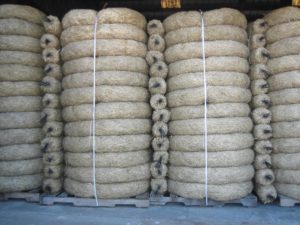History In A Nutshell: The Clean Water Act
Once upon a time there was a river so dirty and full of oil that it caught on fire. No, that’s not an opening to a fantastic fairytale, that’s what really happened in 1969. Because of that infamous Cuyahoga River fire and other dire environmental problems, President Nixon established the Environmental Protection Agency (EPA) in 1970. And in 1972, with the assistance of the EPA, the Clean Water Act was passed into law. The Clean Water Act made it unlawful to discharge any pollutant from a point source into navigable waters, unless a permit was obtained. This permit is called the National Pollutant Discharge Elimination System (NPDES) permit – which regulates storm water discharges from three main sources: municipal separate storm sewer systems (MS4s), construction activities, and industrial activities.
What is the Construction General Permit and how does it affect me?
To regulate these sources of storm water discharges (and prevent any rivers from catching on fire again), the California State Water Resources Control Board (SWRCB) developed a general permit system for each activity. The Construction General Permit (CGP) being the permit applicable to dischargers whose projects disturb one or more acres of soil, or whose projects disturb less than an acre but are part of a bigger development which disturbs more than one acre. Permit coverage is necessary due to the potential for storm water runoff to contain harmful sediments, chemicals, and pollutants from construction activity. Enrolling for coverage under the CGP requires several things from a discharger. First, they must develop a Storm Water Pollution Prevention Plan (SWPPP) which determines their threat to water quality and what Best Management Practices (BMPs) will be utilized to prevent pollution. Second, during construction they must implement the BMPs they selected and maintain them through the life of the project. Third, they must have a qualified individual perform inspections to determine how the BMPs are performing, if maintenance is required, or if additional controls are needed. Lastly, after the construction is completed, all soil disturbance must be covered or stabilized, all temporary BMPs removed, and then the discharger can file for their Notice of Termination (NOT).
What is a SWPPP?
As mentioned above, a Storm Water Pollution Prevention Plan (SWPPP) is a document that is created to comply with the Construction General Permit requirements. A SWPPP is designed to address pollutants and their sources – identifying and controlling sources of sediment and erosion associated with construction activities; ensuring that all non-storm water discharges are identified and either eliminated, controlled, or treated; and ensuring that site BMPs are effective and result in the reduction or elimination of pollutants in storm water discharges and authorized non-storm water discharges from construction activity. A SWPPP must be site specific, outlining all the construction project details, listing site specifications and existing conditions, documenting construction activities and their proposed schedule, and giving an implementation guideline and schedule for BMPs. A SWPPP also provides a detailed site monitoring and inspection program, complete with training for how to carry out this program. The SWPPP, in essence, covers all the storm water pollution prevention actions that need to be implemented on a construction site, as prescribed by the Qualified SWPPP Developer (QSD).
What are BMPs?
Best Management Practices or BMPs are a variety of practices used to treat, prevent, or reduce storm water pollution. Not all BMPs are physical products that you have to purchase and install (such as fiber rolls, drain inserts, gravel bags, compost socks, hydroseeding, etc.), some BMPs are practices or procedures which help keep your site in compliance (good housekeeping, employee training, project scheduling, preservation of existing vegetation, sweeping, dust control watering, etc.). The CGP also has a list of minimum BMPs to have be addressed by all dischargers. So, stay tuned, because next month we will be taking a closer look at BMPs!




